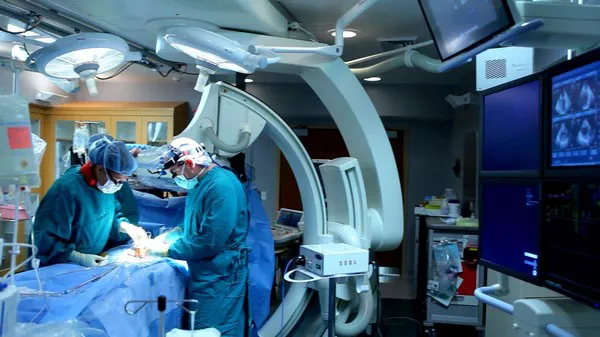Sepsis, a life-threatening condition that arises when the body’s response to infection causes injury to its own tissues and organs, remains a significant challenge in healthcare worldwide. Despite advancements in medical science, sepsis continues to claim countless lives annually. Understanding the multifaceted causes of sepsis is pivotal in devising effective preventive measures and treatments to combat this menacing syndrome.
The Genesis of Sepsis: A Cascade of Events
Sepsis typically stems from the body’s response to an infection. It initiates a cascade of events known as the systemic inflammatory response syndrome (SIRS). While the body’s immune system is naturally equipped to combat infections, in some cases, this response becomes dysregulated, leading to widespread inflammation and tissue damage.
Infections: The Primary Instigator
In the majority of sepsis cases, the underlying cause can be traced back to infections. These infections can originate from various sources, including bacteria, viruses, fungi, or parasites. Common culprits include pneumonia, urinary tract infections, abdominal infections (such as appendicitis or diverticulitis), skin infections, and bloodstream infections (bacteremia).
Bacterial Sepsis: A Dominant Player
Among the different pathogens, bacteria play a predominant role in causing sepsis. Certain strains of bacteria possess virulence factors that enable them to evade the immune system and proliferate rapidly within the body. Pathogens such as Staphylococcus aureus, Streptococcus pneumoniae, Escherichia coli, and Klebsiella pneumoniae are frequently implicated in bacterial sepsis.
Virulence Factors: Enhancing Pathogenic Potency
Virulence factors are molecular tools employed by pathogens to facilitate their survival and proliferation within the host. These factors can include toxins, enzymes, adhesins, and other molecules that aid in evading the immune system and causing tissue damage. The interplay between virulence factors and the host’s immune response significantly influences the severity and outcome of sepsis.
Host Factors: The Vulnerable Terrain
While infections serve as the primary trigger for sepsis, host factors play a crucial role in determining an individual’s susceptibility and response to infection. Various factors, such as age, underlying medical conditions, immune status, genetic predisposition, and prior exposure to pathogens, can influence an individual’s risk of developing sepsis and its progression to severe stages.
Immunocompromised States: A Breach in Defense
Individuals with weakened immune systems are particularly susceptible to developing severe infections and subsequent sepsis. Conditions such as HIV/AIDS, cancer undergoing chemotherapy, organ transplantation, and long-term steroid use can compromise the immune system’s ability to mount an effective response against pathogens, paving the way for sepsis to ensue.
Chronic Medical Conditions: Laying the Foundation
Chronic medical conditions, such as diabetes, chronic kidney disease, liver cirrhosis, and heart failure, can create a conducive environment for infections to flourish. These conditions often impair the body’s physiological functions, compromise tissue perfusion, and disrupt immune responses, increasing the risk of infection-related complications, including sepsis.
Invasive Procedures: Opening the Gates
Invasive medical procedures, such as surgeries, indwelling catheter placements, and mechanical ventilation, can inadvertently introduce pathogens into the body or disrupt the body’s natural defense mechanisms. Hospital-acquired infections, particularly those associated with invasive procedures, pose a significant risk for the development of sepsis, necessitating stringent infection control measures.
Antimicrobial Resistance: A Looming Threat
The emergence of antimicrobial resistance presents a formidable challenge in the management of sepsis. Overuse and misuse of antibiotics have contributed to the proliferation of multidrug-resistant pathogens, rendering conventional treatment modalities ineffective. Patients infected with resistant organisms face heightened risks of developing severe sepsis and experiencing treatment failure.
Delayed Diagnosis and Treatment: Fueling the Fire
Timely recognition and initiation of appropriate treatment are paramount in mitigating the progression of sepsis. However, delays in diagnosis and treatment can exacerbate the inflammatory response, leading to irreversible tissue damage and organ dysfunction. Strategies aimed at enhancing clinical awareness, implementing rapid diagnostic techniques, and streamlining treatment protocols are essential in combating sepsis.
Conclusion:
Sepsis represents a complex interplay between infectious agents and host factors, culminating in a dysregulated immune response and organ dysfunction. By elucidating the intricate causes of sepsis, healthcare providers can implement targeted interventions to prevent, diagnose, and manage this life-threatening condition effectively. A multifaceted approach encompassing infection prevention, antimicrobial stewardship, early recognition, and aggressive treatment is imperative in reducing the burden of sepsis and improving patient outcomes.
FAQs
Q1: What are the early warning signs of sepsis?
Early warning signs of sepsis include fever, elevated heart rate, rapid breathing, confusion or disorientation, extreme pain or discomfort, and clammy or sweaty skin. Additionally, signs such as low urine output, elevated blood sugar, and abnormal blood tests may indicate sepsis.
Q2: Can sepsis be cured?
Sepsis can be treated and cured, especially if diagnosed early. Treatment typically involves antibiotics to fight the underlying infection, intravenous fluids to maintain blood pressure, and in severe cases, medications to support organ function. Prompt medical intervention significantly improves the chances of recovery.
Q3: Who is most likely to get sepsis?
While anyone can develop sepsis, certain groups are more susceptible, including the elderly, infants, individuals with weakened immune systems (such as those undergoing chemotherapy or with HIV/AIDS), people with chronic illnesses (like diabetes or kidney disease), and those who’ve undergone recent surgery or invasive medical procedures. Additionally, patients in intensive care units are at heightened risk.
Related topics:
- The Mysteries of Alzheimer’s: Understanding its Causes
- Managing UC Flare-Ups: What to Eat for Relief
- Determining the Safest Lower Limit for Diastolic Blood Pressure


